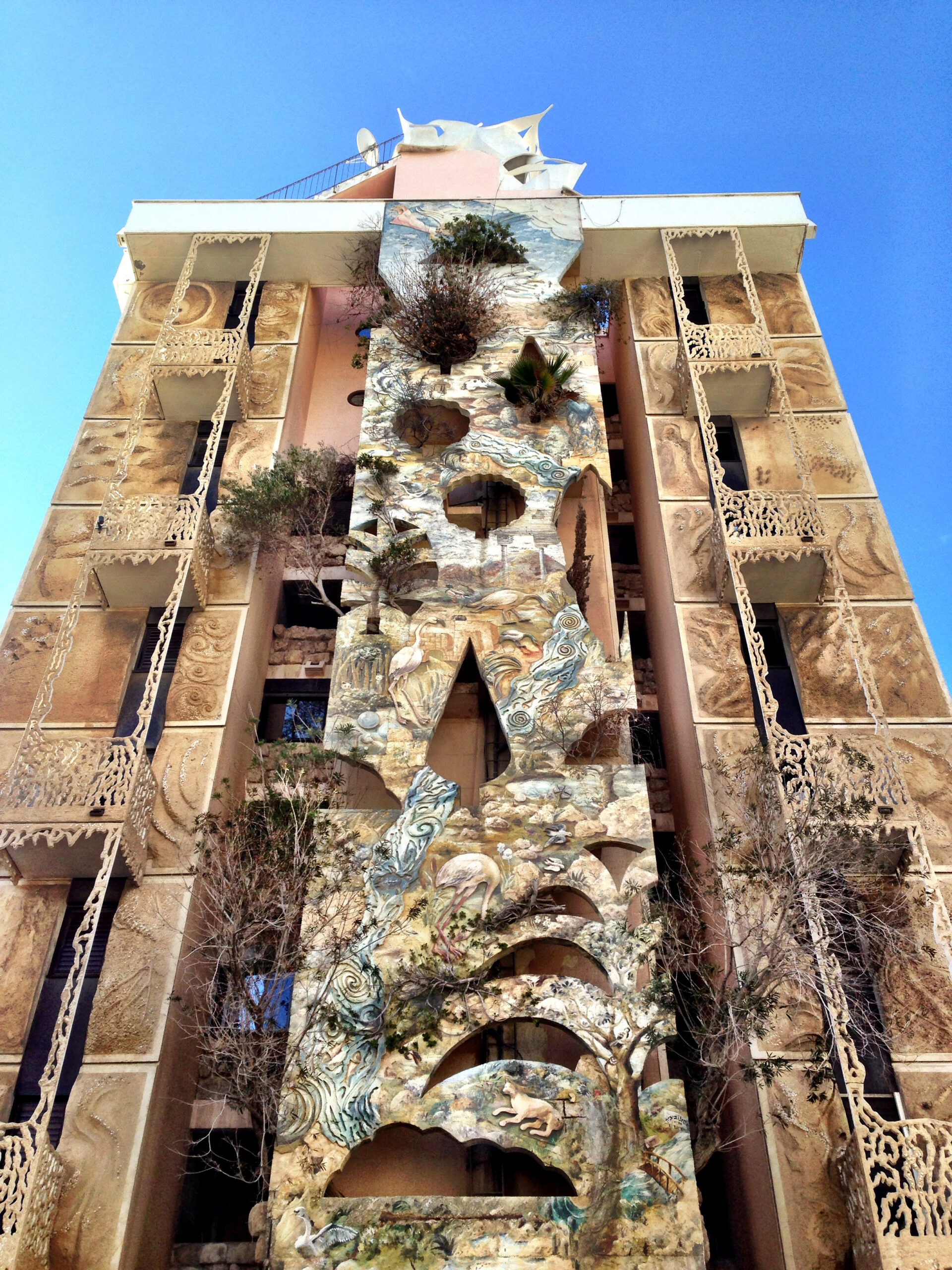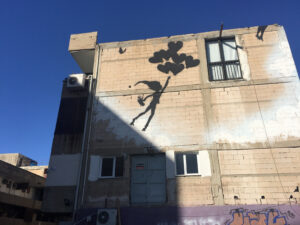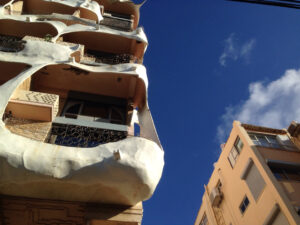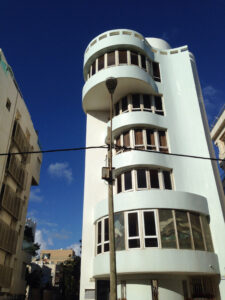
Personal Story

A walk in the city of balagan
My favourite Israeli word – the one that best sums up the spirit of the place, its hustle, bustle, and jostle, its teeming intersection of cultures, beliefs, and ideologies – is balagan.
It’s Russian in origin, and it’s used to describe a chaotic, crazy, mixed up, confusing situation, which makes it a convenient synonym for everyday life in Israel.
But balaganism can be a positive force too, giving rise to creative thinking and fresh approaches to solving complex social problems.
Whenever I’m in Israel, as I am right now, catching up with family in the week of Yom Ha’atzmaut, I lift up my eyes and I see the proof. In the midst of all the balagan, Israel is building, building, building.
One morning, I stood on Polego Beach in Netanya, looking at the tideless, tablecloth-flat Mediterranean, and wondering why there was a tsunami warning sign in three languages on the shore. I suppose you can’t be too careful.

Then I turned around and saw a typical Israeli sight. A patch of scrub clinging tenaciously to a dune, and beyond that, a front-end loader scooping rubble into a skip, and beyond that, a congregation of sleek, ultramodern apartment towers, crowded like Tetris blocks around a luxury shopping mall.
What struck me about the towers, aside from the tightropes of blue and white bunting strung between them, was the absence of a distinguishing characteristic of Israeli urban architecture: externally affixed air conditioning units.
The standard Israeli apartment block, especially ubiquitous in the inner cities, is squat, boxy, and desert coloured, with air conditioners studded like rock-climbing handholds on the walls.
Now and then, you’ll come across a block that has been appropriated as a canvas by a street artist, dressing the strict functionalism of bare concrete in splashes of colour, whimsy, and wit.
But for the wandering architectophile, there is joy to be found too in the unadorned façades of buildings that have their own story to tell about Israeli history, culture, life, and lifestyle.
In Tel Aviv, there’s an area called White City, which is famous for its hundreds of wonderworks of the Bauhaus school, the legacy of a group of architects who came here as refugees from Nazi Germany in the 1930s.
Adapting their modernist European aesthetic to local conditions, they designed public and residential buildings of sinuous grace and elegance, raised on pillars to let the cool breeze in, with soft curves accentuated by sharp, jutting angles.

There are few more pleasing city experiences than to wander down Dizengoff Street, admiring these dazzling confections of whipped-cream concrete, with their long, narrow balconies shading each other, and then to park at a pavement café and admire them some more from a seated position.
Tel Aviv, the Hill of Spring, was designed from the ground up as a garden city, and there’s proof in the human scale of its tree-lined boulevards, its rushing fountains, its playgrounds and parks, and its rest benches in the glare of the glass skyscrapers.
But there’s room in the city for eccentricity too, and on a crazy whim, I schlepped from the Bauhaus to see the Crazy House, perched on the beachside on HaYarkon Street.
It’s a nine-storey slab with balconies undulating like ocean waves on the sea-facing side, and a fresco of a desert wadi on the other, and it’s slapped on both faces with distorted, disjointed forms that bring vegetation and human skeletons to mind.
It’s the funhouse-mirror opposite to the cool and disciplined Bauhaus style, a Daliesque dream of a society teetering on the precipice of chaos.
The Crazy House is ugly in a beautiful way, in contrast to my next stop, the Herta and Paul Amir Building at the Tel Aviv Museum of Art on Sderot Sha’ul HaMelech, which is beautiful in an ugly way.
Within the complex of galleries are works by Picasso, Miró, Van Gogh, Monet, Klimt, Jackson Pollock, Roy Lichtenstein, Henry Moore, and others; without is a building of polished folds and angles that looks like an origami reimagining of Noah’s ark.

Then there are the buildings that are neither beautiful nor ugly, merely brutal, such as the Psagot Investment Tower on Ahad Ha’am Street, which rises Babel-like, the rows and rows of windows interrupted, 15 floors from the top, by a jolt of negative space with a pillar in-between, like the handle of a jug.
This architectural style is known as Brutalism, not because of any predilection for brutality on the part of the architect, but because it calls for copious amounts of “beton brut”, meaning raw concrete.
Still, a good Brutalist building – another example being Ponte in Johannesburg – will always bring dystopian science fiction to mind, which is why I like to stop and stare and wonder what it must be like to walk down those long, neon-lit corridors in search of one’s office cubicle.
But a walk through the streets of Tel Aviv will always lead me, in the late afternoon, to the long and winding promenade, where I can watch the sun sinking over the ancient towers and temples of Jaffa, and look back at the ever-changing skyline, in all its mixture of stone and glass, old and new, order and chaos and balagan.
- Gus Silber is an award-winning journalist, editor, speechwriter, and author.










